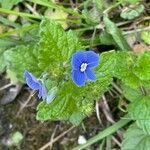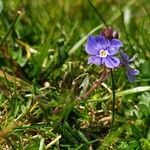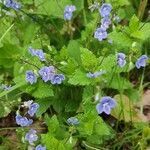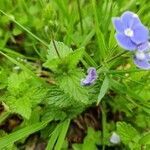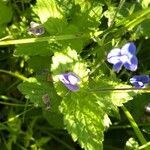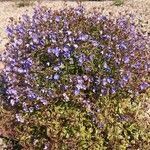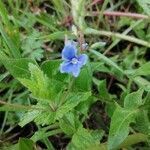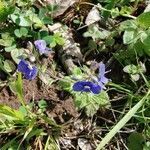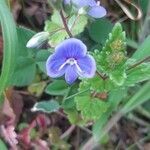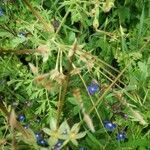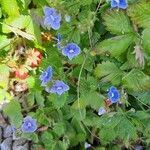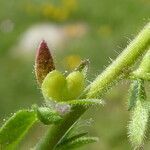Rhizomatous perennial, 1–3 dm, prostrate or loosely ascending, spreading-hairy, at least on the stem; lvs all opposite, ovate, broad-based and sessile or nearly so, 1.5–3 × 0.8–2 cm, 1–2 times as long as wide, coarsely crenate-serrate with mostly 5–11 teeth per side; racemes axillary, pedunculate, loose, the 10–20 fls evidently pedicellate; pedicels 5–9 mm at maturity, surpassing the subtending, alternate bracts; cor blue, 8–12 mm wide; style 3–5 mm; fr (rarely produced) 3–3.5 mm, broadly triangular-obcordate, with apparently about 6 seeds per locule; 2n=16, 32. A weed in lawns and open, mostly disturbed sites; native of Europe, intr. in much of our range. May–June.
A small herb. It grows 15-25 cm high and spreads 30-50 cm wide. It keeps growing from year to year. It forms mounding clumps. The leaves are oval and have teeth. they are 12-40 mm long. They are bright green and have a few hairs. The flowers are small and blue. They have white centres. The flowers are held above the leaves in open sprays. These can contain 30 flowers.
